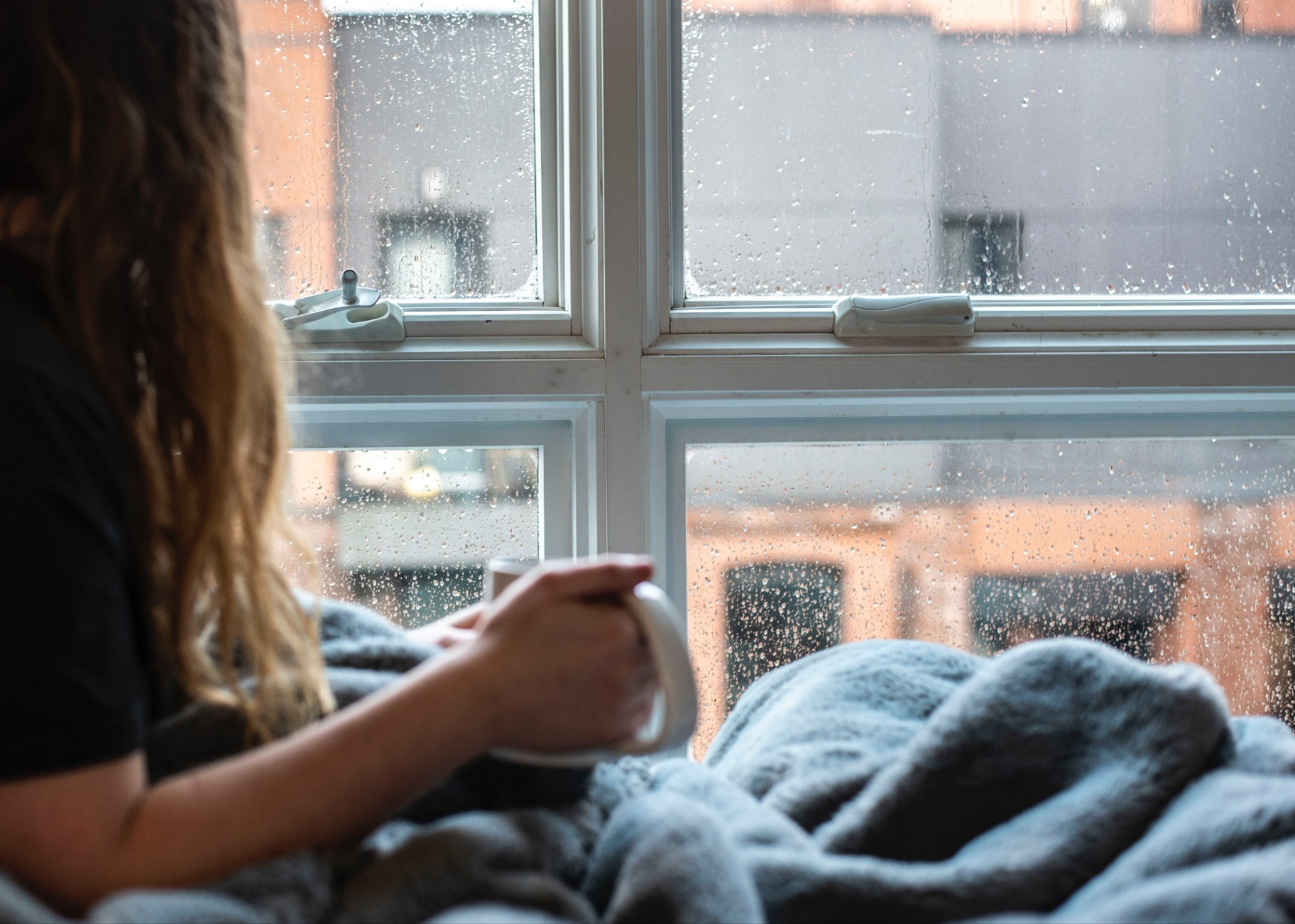Everything You Need To Know About Seasonal Affective Disorder/Depression

As the seasons change and we embrace the beauty of autumn’s colorful foliage and cozy days wrapped in a warm blanket, many of us experience shifts in our mood, signaling the dreaded summer withdrawals have begun.
For some, these mood changes are more than just transient mood swings. They are part of a psychological condition, Seasonal Affective Disorder (SAD), commonly referred to as seasonal depression.
In this blog, we’ll be helping you understand Seasonal Affective Disorder/Seasonal Depression and share some tips for managing it (offering some rays of hope for the rainiest days 🌧️😩🌞😏).
So what exactly is Seasonal Affective Disorder or Seasonal Depression?
Seasonal Affective Disorder/Seasonal Depression, is a significant change in mood that occurs during specific times of the year. Most commonly, Seasonal Affective Disorder/Seasonal Depression are experienced in the fall and winder months, however, it is not uncommon to experience it during the summer and spring months.
Seasonal Affective Disorder/Seasonal Depression are thought to be connected to the reduction in natural light that occurs as the days grow shorter in the fall and winter. These reductions in light are thought to impact our circadian rhythm and disrupt the function of neurotransmitters directly connected to our mental health (Eg. Serotonin and Dopamine). More research is needed to determine an exact cause.
How does Seasonal Affective Disorder/Seasonal Depression look?
Each individual is unique so it is no surprise that Seasonal Affective Disorder/Seasonal Depression manifests differently in each individual. Some common symptoms to look for are listed below.
Please note that anytime you experience significant changes in your wellbeing, it is important to consult with your family doctor to ensure that there are no physical or medical causes for these changes.
Persistent Sadness
Seasonal Affective Disorder/Seasonal Depression are forms of depression. It it common to experience sadness, hopelessness, or otherwise feel down for several weeks at a time.
Fatigue
Are you experiencing a significant decrease in energy levels that are impacting your productivity? If you’re getting a full night’s sleep and still feeling tired, Seasonal Affective Disorder/Seasonal Depression may be at play.
 Changes in Sleep Patterns
Changes in Sleep Patterns
Insomnia (inability to fall or stay asleep) as well as oversleeping, or disruptions to sleep such as nightmares and sleep avoidance can indicate Seasonal Affective Disorder/Seasonal Depression.
Weight Fluctuations
Sometimes Seasonal Affective Disorder/Seasonal Depression can impact appetite, resulting in weight gain or weight loss. Some individuals notice a suppressed appetite, a heightened appetite, and cravings for high carb and processed foods that are likely to leave them feeling worse.
Irritability
We often associate depression with sadness but irritability, anxiety, agitation, and anger, are common with Seasonal Affective Disorder/Seasonal Depression.
Social Withdrawal
Often, with Seasonal Affective Disorder/Seasonal Depression, we distance ourselves from social activities and relationships. Sometimes social withdrawal is a result of low mood, other times results from changes in daily activities due to changing seasons which then impacts our mood.
Difficulty Concentrating
Seasonal Affective Disorder/Seasonal Depression can lead to difficulty with concentration/focus and memory. This is often related to changes in our sleep patterns, fatigue, and preoccupation with other thoughts.
How common is it?
Let’s take a look at some statistics and facts about Seasonal Affective Disorder/Seasonal Depression:
 Prevalence
Prevalence
It is expected that 2% to 3% of Canadians will experience Seasonal Affective Disorder in their lifetime.
Another 15% will experience a milder form of Seasonal Affective Disorder that leaves them only slightly depressed (Seasonal Depression), but still able to live their life without major disruptions.
People with Seasonal Affective Disorder make up about 10% of all depression cases.
Gender Differences
Women are more likely to be diagnosed with Seasonal Affective Disorder/Seasonal Depression. Some research suggests that they are up to nine times more likely than males to experience Seasonal Affective Disorder/Seasonal Depression.
Age of Onset
Young and middle aged adults are at higher risk of Seasonal Affective Disorder than children and teenagers. Risk of seasonal affective disorder declines after age 50.
Geographic Impact
SAD is more common in regions with less sunlight during the winter months, such as higher latitudes.
I think I have Seasonal Affective Disorder/Seasonal Depression, what can I do?
Recognizing seasonal depression can be challenging, as it can be mistaken for the “winter blues” or general mood swings. However, if you experience the symptoms mentioned above interfere with your life and notice a regular pattern of their occurrence during specific seasons, it may be time to consider if you have Seasonal Affective Disorder/Seasonal Depression. Consulting with a mental health professional is an important first step.
Treating Seasonal Affective Disorder/Seasonal Depression
The good news is that you do not have to suffer in silence. There are effective strategies for managing and treating Seasonal Affective Disorder/Seasonal Depression. Sometimes you will need to try multiple approaches before you find the ones that work for you.
 Light Therapy
Light Therapy
Light therapy, also known as phototherapy, involves sitting in front of a lightbox that emits bright, artificial light. This mimics natural sunlight and can help alleviate symptoms. It is important to consult a healthcare professional before starting light therapy to ensure it will be a fit for you. When you start using light therapy, it is important to use the light in the right way at the right time of day.
Medication
In some cases, medication may be prescribed to help regulate mood and manage the symptoms of Seasonal Affective Disorder/Seasonal Depression . Consult with a family doctor or psychiatrist to discuss if this is an option for you.
Psychotherapy
Psychotherapy, particularly cognitive-behavioral therapy (CBT) and mindfulness based psychotherapies can help individuals cope with and target the symptoms of Seasonal Affective Disorder/Seasonal Depression.
Lifestyle Changes
Believe it or not, the things that we do everyday will alleviate or worsen symptoms of Seasonal Affective Disorder/Seasonal Depression. Engaging in regular exercise, eating a balanced diet, maintaining proper sleep hygiene, and spending sufficient time with others and in nature can lead to significant improvements in mood and energy levels. Psychotherapists can help you determine which changes would most benefit you and hold you accountable to making those changes.
Mindfulness and Stress Reduction
Mindfulness practices, such as meditation and yoga, can help manage stress and improve emotional well-being.
Support System
We were not wired to navigate life’s difficulties alone. Maintaining connections with friends and family are predictors of our wellbeing. Building a strong support system can help you overcome Seasonal Affective Disorder/Seasonal Depression.
Seasonal depression is a common condition that affects millions of people each year. By seeking professional help and considering treatment options like light therapy, medication, and lifestyle changes, individuals can find relief from symptoms of Seasonal Affective Disorder/Seasonal Depression and regain a sense of well-being.
You’re not alone, and with the right support, you can overcome the challenges that come with changing seasons and the emotional ups and downs they may bring.

